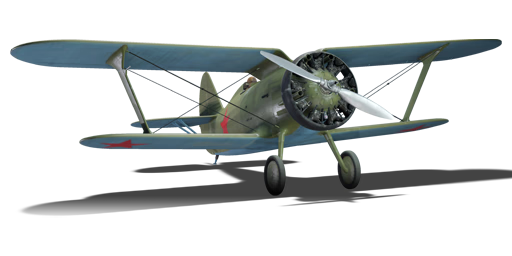

The I-15 M-22 is a Soviet fighter. It has been in the game since the start of the Open Beta Test prior to Update 1.27.
The I-15 M-22 is a single-engine fighter developed from the OKB Polikarpov I-15 (TsKB-3) for a 1935 release. Attempt to introduction the Soviet license modification of the Wright Cyclone SGR-1820 engine under the designation M-25 was progressing very slowly, therefore most of the production I-15 aircraft at this time were outfitted with the 9-cylinder Gnome et Rhône air-cooled M-22 engines (the licensed version of the British Bristol Jupiter VI) which had a nominal power of only 480 hp, which caused this aircraft's flight performance to suffer.
While on the final production series of this aircraft the M-25 engines were installed, this version of the aircraft in-game features the weaker M-22 engine. However, M-22 engine has less weight than the M-25, so this aircraft is 153 kg lighter.
flaps
flaps
flaps
brake
control
| Belt | Belt filling | Armor penetration (mm) at a distance: | |||||
|---|---|---|---|---|---|---|---|
| 10 m | 100 m | 500 m | 1000 m | 1500 m | 2000 m | ||
| T/Ball/AP-I/AI/AI/AI | 13 | 12 | 7 | 3 | 2 | 0 | |
| T/AP-I/AI/AI/API-T | 13 | 12 | 7 | 3 | 2 | 0 | |
| API-T | 9 | 8 | 6 | 3 | 0 | 0 | |
| AP-I/AP-I/AP-I/AI/AI | 13 | 12 | 7 | 3 | 2 | 0 | |


